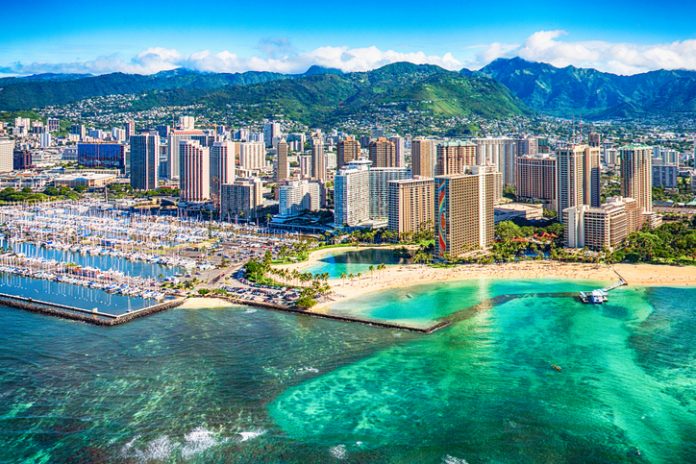HONOLULU – With projections showing that Hawaii is expected to be in the top five states with the highest number of hotel job losses for 2021, American Hotel & Lodging Association (AHLA) President and CEO Chip Rogers and Hawaii Lieutenant Governor Josh Green joined to underscore efforts to bring hotel employees back as hotels prepare for summer travel.
In Hawaii, the total projected job loss for the year amounts to an estimated 20,029 jobs. Industry analysts estimate that hotel employment is unlikely to reach pre-pandemic levels until at least 2023, and recovery for the industry is not projected until 2024.
To highlight AHLA’s commitment to hosting guests in a safe and clean environment, the organization is partnering with states and elected officials to launch a series of “Safe Stay” events across the country to increase awareness among travelers about the industry’s health and safety protocols. The meeting between Rogers and Green is the first in this series.
The event also follows the introduction of the Save Hotel Jobs Act, introduced by U.S. Senator Brian Schatz (D-Hawaii) and U.S. Representative Charlie Crist (D-Fla.), which will provide targeted relief to the ailing hotel industry until travel returns to pre-pandemic levels. While many other hard-hit industries have received targeted federal relief, the hotel industry has not. In fact, hotels are the only major hospitality and leisure segment yet to receive direct aid.
“While leisure travel will start returning this year as more and more people are vaccinated, business and group travel will take significantly longer to recover and is a major source of employment for the hotel industry. We remain optimistic, but the road to recovery for the hotel industry is long and we need support, especially in states like Hawaii. The Save Hotel Jobs Act will help support the hotel industry with targeted relief in order to stem permanent losses and keep hotel workers employed,” said Rogers. “As we begin to welcome back travelers, Safe Stay’s rigorous health and safety protocols, which were designed in accordance with CDC guidelines and reviewed by the CDC, will continue to help create peace of mind.”
Hotels are seeing an uptick in leisure travel, with 61 percent of Americans expected to travel for leisure this summer according to a poll conducted by Morning Consult and commissioned by AHLA. While leisure travel outlook continues to grow, the hotel industry is still hurting from this pandemic. Business travel is down 85 percent from pre-pandemic levels and is not expected to fully return until 2024. Unlike leisure travel, which can often be booked or changed at the last minute, meetings and events are scheduled months, if not years, in advance.
“Tourism is an important industry that brings thousands of jobs to Hawaii, supports the livelihood of many residents, and provides resources for hospitals, schools, and cultural and environmental stewardship,” said Green. “As we continue the COVID-19 vaccination rollout and maintain public health best practices, we are optimistic Hawaii can safely reopen for summer travel with the support of our hospitality industry.”
When selecting a hotel, enhanced cleaning and hygiene practices continue to rank as a guests’ number two priority, just behind price. At the onset of the pandemic, the hotel industry launched “Safe Stay,” an initiative focused on enhanced hotel cleaning practices, social interactions, and workplace protocols to meet the new health and safety challenges and expectations presented by COVID-19. These industry-wide guidelines were designed to prepare U.S. hotels to safely welcome back guests and employees.
Further, nearly half of consumers view vaccine distribution as a key to travel. As more U.S. citizens are vaccinated, the hotel industry is committed to promoting safe travel while also creating a standardized safety experience nationwide through the Safe Stay initiative.











